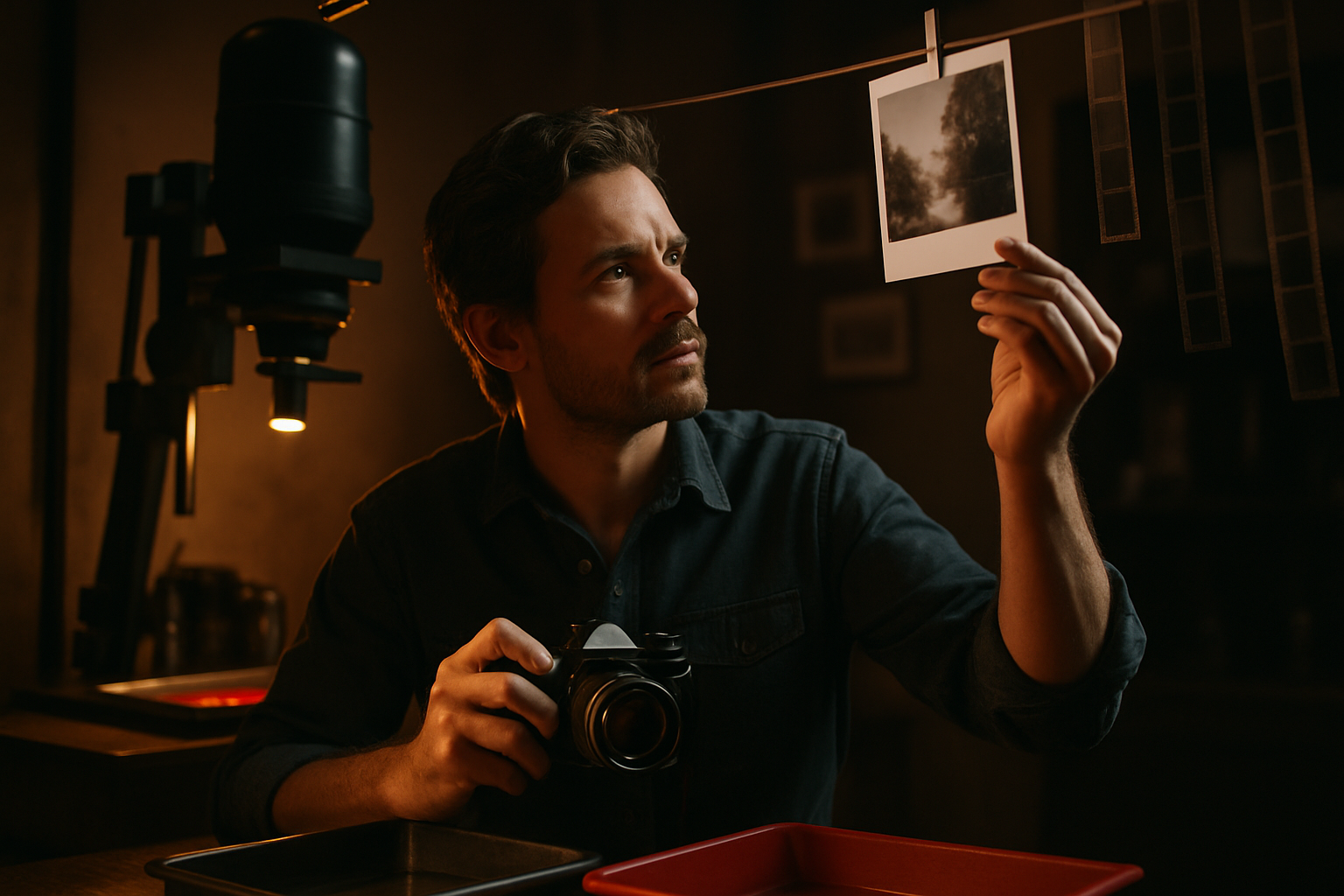Analog Photography's Digital Renaissance
The timeless allure of film captures a new generation In an era dominated by digital convenience, a surprising trend has emerged in the world of photography. Analog photography, once considered obsolete, is experiencing a remarkable resurgence among both seasoned professionals and young enthusiasts. This renaissance of film-based image-making is reshaping the landscape of visual arts, challenging our perceptions of creativity in the digital age, and redefining the aesthetics of contemporary photography.

Aesthetic Appeal in the Digital Age
One of the primary drivers behind analog photography’s comeback is its unique aesthetic. Film photographs possess a distinct look characterized by grain, color rendition, and tonal range that many find impossible to replicate digitally. This analog look has become increasingly desirable in a world where digital perfection is the norm, offering a refreshing departure from the clinical sharpness of modern digital sensors.
The Slow Photography Movement
Analog photography’s resurgence aligns closely with the slow photography movement, which emphasizes mindfulness and intentionality in image-making. Unlike digital photography, which allows for hundreds of shots to be taken in rapid succession, film photography requires careful consideration of each frame. This limitation fosters a more thoughtful approach to composition and subject matter, resulting in images that often carry greater emotional weight and artistic value.
Educational Renaissance
The revival of analog photography has sparked a renewed interest in traditional photographic techniques among educational institutions. Many art schools and universities have reintroduced film photography courses, teaching students the fundamentals of exposure, development, and printing. This educational shift is not only preserving important historical techniques but also fostering a new generation of artists who seamlessly blend analog and digital methods in their work.
Industry Adaptation and Innovation
The photography industry has responded to the analog renaissance with enthusiasm. Major camera manufacturers have reintroduced film camera models, while new startups have emerged to cater to the growing demand for analog equipment and supplies. Film producers have also adapted, developing new emulsions that cater to contemporary tastes while still maintaining the classic characteristics that make film unique.
Crossover with Digital Technology
Interestingly, the analog revival has not occurred in isolation from digital technology. Many photographers are embracing hybrid workflows, combining the best of both worlds. Film negatives are often scanned and digitally processed, allowing for the unique qualities of film to be preserved while taking advantage of the flexibility of digital editing tools. This merger of analog and digital techniques is pushing the boundaries of photographic expression and creating entirely new aesthetics.
Environmental and Ethical Considerations
The resurgence of analog photography has also sparked important conversations about sustainability and ethics in image-making. While film photography involves chemical processes that can be environmentally problematic, many argue that the longevity and tangibility of film photographs make them more sustainable in the long run compared to the energy-intensive storage and obsolescence of digital files. Additionally, the slower, more deliberate nature of film photography is seen by some as a more ethical approach to image-making, particularly in documentary and portrait work.
Cultural Impact and Artistic Expression
Beyond its technical aspects, the analog photography revival has had a significant cultural impact. It has become a symbol of authenticity in an increasingly digital world, with film photographs often perceived as more genuine or artistically valid. This perception has influenced not only the art world but also commercial photography, with many brands opting for film-based imagery in their advertising to convey a sense of craftsmanship and timelessness.
Future Prospects and Challenges
As analog photography continues to gain momentum, it faces both opportunities and challenges. The growing demand has led to rising prices for vintage equipment and film, potentially limiting accessibility. Moreover, the environmental impact of increased film production and processing remains a concern. However, these challenges are spurring innovation in sustainable practices and alternative processes, ensuring that analog photography continues to evolve alongside its digital counterpart.
The resurgence of analog photography represents more than just a nostalgic trend; it is a profound shift in how we approach image-making and visual storytelling. By embracing the limitations and unique characteristics of film, photographers are rediscovering the joy of creation and the power of tangible, physical images. As this renaissance continues to unfold, it promises to shape the future of photography, blending the best of analog and digital worlds to create a rich and diverse photographic landscape for generations to come.





